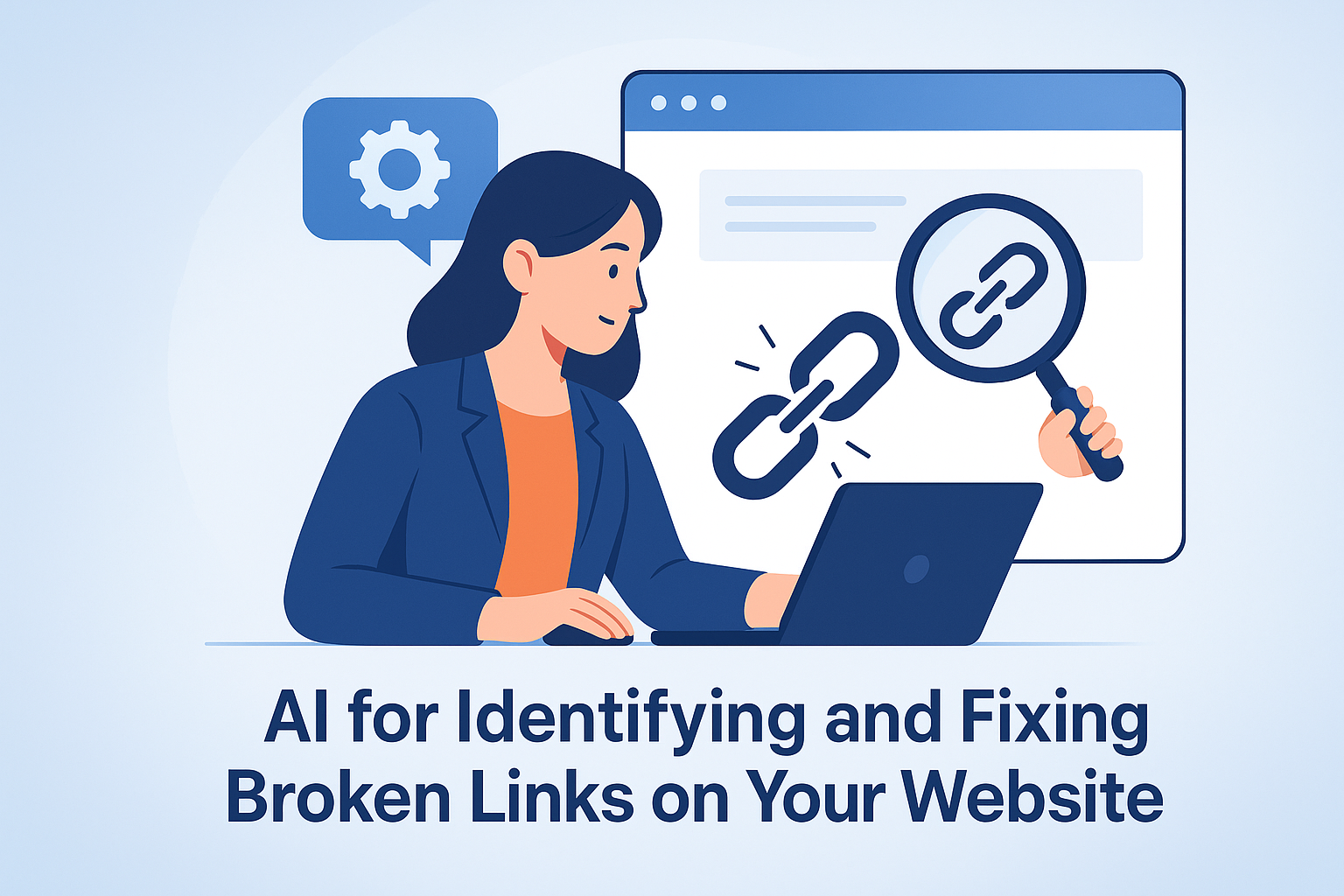Mobile usability isn’t just a UX issue—it’s a search engine ranking factor. With mobile-first indexing, Google evaluates your mobile experience as the primary version of your website.
And here’s the catch: mobile users behave differently. They’re impatient, easily distracted, and expect intuitive, frictionless navigation.
If your mobile navigation is clunky, cluttered, or confusing, your SEO, conversions, and customer satisfaction will suffer.
Enter AI.
In this guide, you’ll discover how to use artificial intelligence to:
- Analyze and improve mobile navigation flow
- Enhance usability through layout and interaction design
- Automatically generate content and menu suggestions
- Monitor user behavior in real-time
- Apply best practices using DIYSEO GPT, SEO AI Writer, and Link Marketplace
Why Mobile Navigation Matters for SEO and UX
Navigation is how users find your content. On mobile, it’s often their only lifeline to your full site. If users can’t quickly get to what they need, they leave—and search engines take note.
Poor mobile navigation leads to:
- Higher bounce rates
- Lower engagement and time on page
- Missed indexing opportunities for deep content
- Reduced crawl efficiency
- Negative Core Web Vitals and mobile usability signals
Improving mobile UX boosts not only user satisfaction but also your visibility in search results.
Common Mobile Navigation Mistakes
Before AI can help, let’s identify the usual suspects that hurt mobile SEO:
| Problem | Impact |
|---|---|
| Overloaded hamburger menus | Users don’t scroll or tap deep |
| Hidden or buried CTAs | Poor conversions and engagement |
| Long dropdowns | Unusable on small screens |
| No search function | Frustrates returning users |
| Too many clicks to content | Higher bounce rate |
How AI Can Optimize Mobile Navigation and UX
Artificial intelligence simplifies both diagnosis and design. With AI, you can:
- Audit navigation usability by device type
- Analyze user interaction heatmaps and scroll maps
- Suggest better menu organization
- Predict user pathways and remove friction
- Automatically adjust content layout for engagement
Step-by-Step: Using AI to Improve Mobile Navigation and UX
🧠 Step 1: Analyze Mobile Behavior with DIYSEO GPT
Start by understanding how users interact with your current navigation.
Prompt:
“Analyze mobile navigation behavior on my top 10 landing pages. Highlight where users drop off, click errors, or menu friction.”
DIYSEO GPT can analyze:
- Tap targets and click-through performance
- Scroll patterns
- Bounce rates by device
- Menu engagement (or lack of it)
- Missed CTA opportunities
You’ll get a prioritized list of pages and components that need attention.
🗺️ Step 2: Redesign Navigation Flow with AI Recommendations
Based on the behavioral insights, AI can help suggest better menu structure and logic.
Prompt:
“Redesign the mobile menu structure for my blog to surface trending content, key categories, and SEO cornerstone pages.”
AI returns:
- Simplified menu hierarchy (3–5 core categories max)
- Suggestions for sticky navigation or quick-action menus
- Conditional menus for returning vs. new users
- Calls to action like “Book a Demo” or “Get Free Guide” near the top
Use this data to restructure your mobile header, footer, and drawer menus.
✍️ Step 3: Generate UX-Optimized Copy with SEO AI Writer
Use SEO AI Writer to write:
- Button and menu copy that’s concise and action-driven
- Descriptions for mobile tiles or dropdowns
- Sticky menu bar CTAs optimized for engagement
Prompt:
“Write CTA button text for a mobile nav bar encouraging newsletter sign-ups for an AI SEO blog.”
AI Output:
- “Get SEO Tips”
- “Join Free Weekly SEO Update”
- “Boost Your Rankings – Subscribe”
📲 Step 4: Optimize Key Page Templates for Mobile Behavior
Ask DIYSEO GPT:
“How should I structure mobile content on /services to improve clarity, speed, and engagement?”
Recommendations may include:
- Collapsible FAQ sections
- Sticky action buttons (e.g., “Get a Quote”)
- Minimizing above-the-fold clutter
- Auto-hiding headers and navigation on scroll for more reading space
- Larger tap targets and simpler forms
🔗 Step 5: Adapt Internal Linking for Mobile Users
Mobile users don’t scroll as far or navigate through complex submenus. Ensure your most important internal links are:
- Easily tappable
- Visible within the first screen or two
- Contextually placed within content
Prompt:
“Suggest 3 internal pages I should link to from the first 200 words of /ai-content-tools for better mobile SEO.”
Use SEO AI Writer to:
- Rewrite intro sections
- Integrate link anchors naturally
- Avoid link overload or confusing text
📊 Step 6: Monitor and Test Mobile UX Improvements
After applying changes, track impact over time:
Prompt:
“Compare bounce rate, tap-through rate, and mobile scroll depth on /pricing before and after nav changes.”
DIYSEO GPT can help you:
- Interpret engagement shifts
- Identify whether users are now reaching CTAs or key content
- Recommend further refinements
Bonus: Pair Navigation Improvements with Link Marketplace Promotion
Once your mobile UX is clean and content is accessible, promote it.
Use the Link Marketplace to:
- Acquire links to newly structured content hubs
- Drive traffic to navigation-dependent landing pages
- Target niches with high mobile engagement
Prompt:
“Find link placements in tech, SaaS, or AI blogs for my updated /tools directory now optimized for mobile UX.”
Backlinks combined with improved usability multiply your rankings and reduce bounce-back behavior from the SERPs.
Mobile UX Optimization Checklist (AI-Powered)
| Task | Tool | Action |
|---|---|---|
| Audit current behavior | DIYSEO GPT | Identify menu friction and scroll patterns |
| Redesign nav flow | GPT | Suggest simplified menus by intent |
| Write button/menu text | SEO AI Writer | Generate concise, clickable copy |
| Fix CTA placement | GPT | Move actions higher and make sticky if needed |
| Structure content for small screens | GPT + Writer | Suggest collapsible, skimmable formats |
| Re-link contextually | Writer | Add mobile-friendly links in first content block |
| Promote via backlinks | Link Marketplace | Boost mobile-optimized pages |
Real-World Example: Mobile UX Makeover in Action
Problem: An agency’s service pages had a 75% mobile bounce rate. Menu was cluttered, and CTAs were buried.
AI Fix:
- DIYSEO GPT identified poor menu interaction and low scroll depth
- AI suggested a sticky “Book a Call” button and simplified 4-option menu
- SEO AI Writer rewrote mobile copy blocks for clarity
- Link Marketplace was used to build links to the streamlined “Services” page
Result:
- Bounce rate dropped to 43%
- Mobile conversions rose by 58%
- Page moved to top 5 rankings for “AI SEO services”
Final Thoughts
AI doesn’t just optimize your content for search—it can dramatically improve how users navigate and experience your website on mobile devices.
By using:
- DIYSEO GPT to audit behavior and suggest UX fixes
- SEO AI Writer to enhance copy for mobile clarity and performance
- Link Marketplace to amplify your improved user experience with high-authority backlinks
…you can create a mobile journey that both users and search engines love.
Faster. Simpler. Smarter. That’s mobile SEO with AI.
Frequently Asked Questions
1. How does AI enhance mobile navigation and user experience?
AI significantly enhances mobile navigation and user experience by offering personalized, predictive, and efficient interaction models. Imagine opening a mobile app, and it immediately highlights the features you use most frequently – that’s AI at work. AI algorithms analyze user behavior, preferences, and patterns to suggest content, streamline navigation, and predict user needs before they even arise. This level of customization leads to an intuitive UX, reducing user effort and time spent on tasks. Moreover, AI can dynamically adjust navigation paths based on real-time data analysis, ensuring that user interactions are always tailored and evolving with their preferences.
2. Can AI help in making mobile apps more accessible for users with disabilities?
Absolutely, AI is transformative in making mobile apps more accessible. Through AI-driven features like voice recognition, real-time language translation, and adaptive interfaces, users with disabilities can navigate apps much more easily. Voice-controlled interfaces allow users who may have difficulty with touch-based navigation to control apps using speech. Additionally, AI can provide real-time adjustments in UI elements like font size, contrast, and layout, based on individual accessibility needs, thereby enhancing the user experience for all users, regardless of physical limitations.
3. What role does machine learning play in optimizing mobile navigation?
Machine learning, a subset of AI, is crucial in optimizing mobile navigation by continuously learning from user interactions and improving the navigation process. As users engage with mobile apps, machine learning models track and analyze this behavior to understand what users find efficient or cumbersome. Over time, the ML algorithms identify patterns and adapt the app’s navigation paths to better suit user habits. This iterative learning and adaptation process helps create a smoother, more intuitive navigation experience. For example, apps can start to predict your actions based on past behavior, like pre-loading frequently accessed pages or suggesting the next logical task. In sum, machine learning enhances the efficiency and fluidity of mobile navigation continuously over time.
4. How does AI impact user engagement on mobile platforms?
AI significantly influences user engagement on mobile platforms by tailoring the user experience to keep individuals involved and returning to the app. By using AI to personalize content—such as recommending articles, music, or products based on user history and preferences—mobile apps create an engaging and unique experience for each person. Furthermore, AI-driven user interfaces are not only responsive but also proactive; they suggest new features to explore and provide immediate assistance through chatbots or virtual assistants. This level of customization and support boosts user satisfaction and increases the likelihood of users spending more time within the app, thereby enhancing overall engagement levels.
5. What are the privacy concerns associated with AI in mobile navigation, and how can they be addressed?
While AI brings significant benefits to mobile navigation and UX, it also raises privacy concerns, primarily due to the data it requires to function effectively. AI systems often need access to large amounts of user data to accurately predict preferences and behaviors. This requirement can lead to concerns about data security and the potential misuse of personal information. To address these concerns, developers must ensure robust security measures are in place, such as data encryption and secure data storage practices. Furthermore, implementing transparent data policies and giving users control over their data—such as through consent forms and options to opt-out of data collection—can help alleviate privacy concerns. Regular audits and compliance with data protection regulations, like GDPR, are also essential in fostering trust and transparency in AI-driven mobile experiences.



